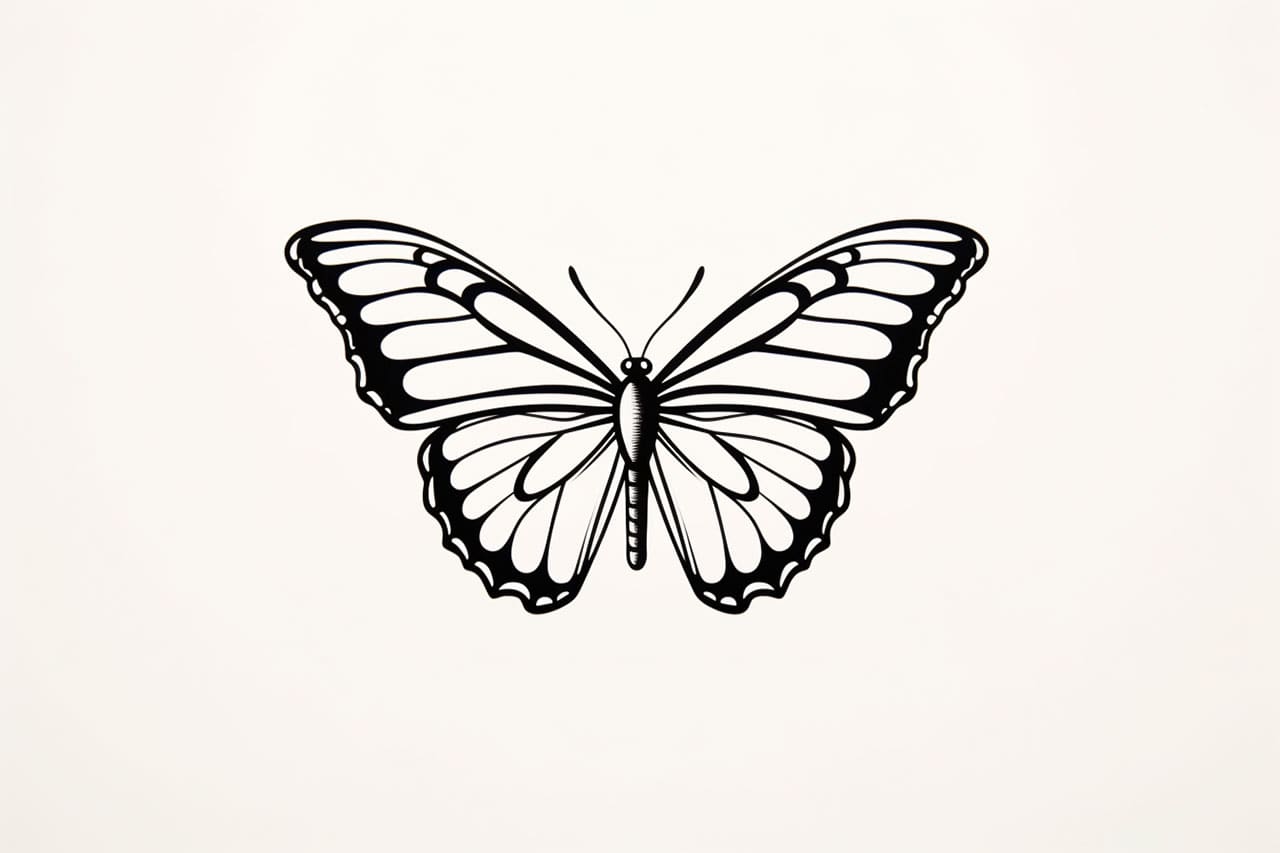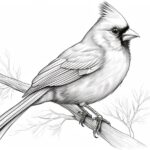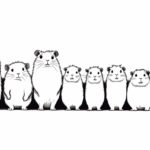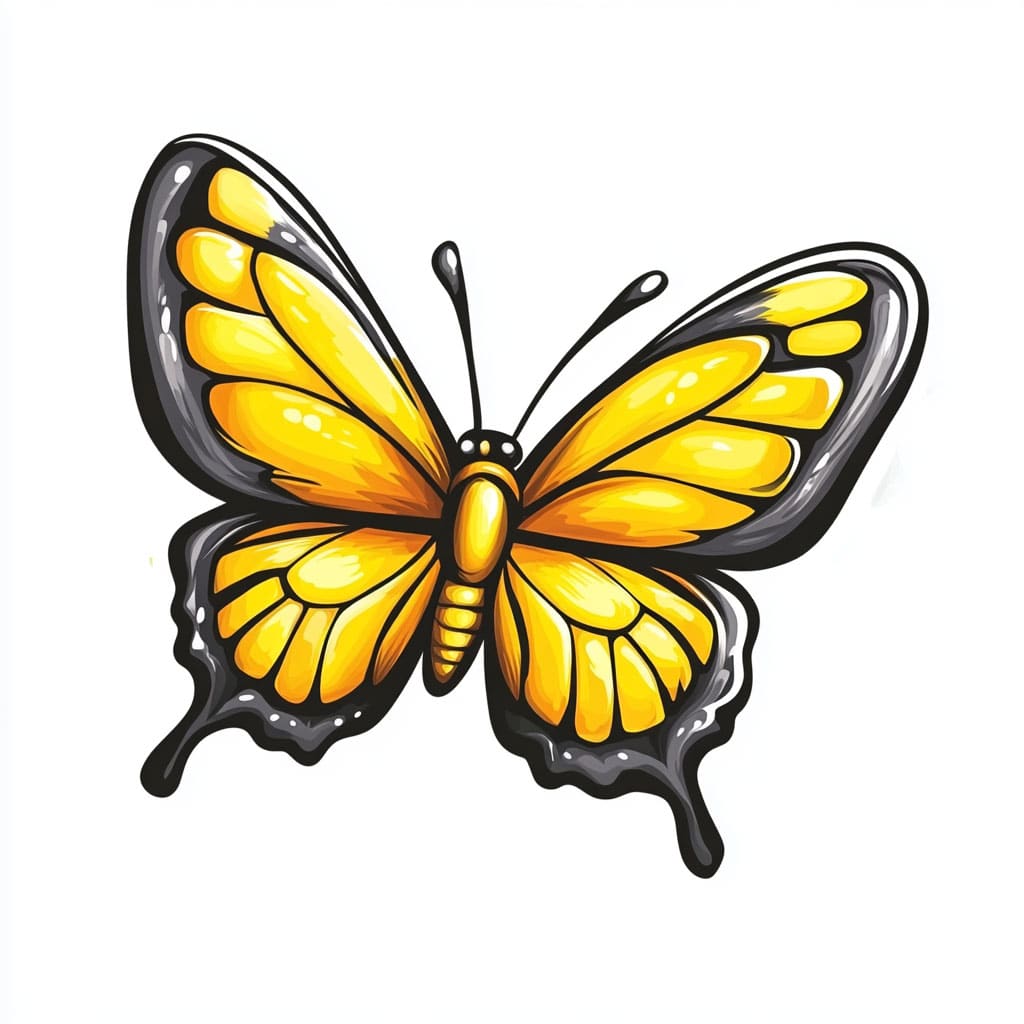
Welcome to this exciting tutorial where we’ll delve into the delicate beauty of one of nature’s most iconic creatures—the monarch butterfly. With its vibrant orange wings, bold black veins, and signature white spots, the monarch butterfly is a symbol of transformation, freedom, and resilience. Drawing this stunning insect is not only a rewarding artistic endeavor but also a wonderful way to appreciate its intricate patterns and graceful symmetry.
Whether you’re a seasoned artist seeking to refine your skills or a beginner eager to try your hand at drawing something spectacular, this step-by-step guide will walk you through the process of how to draw a monarch butterfly. We’ll cover everything from outlining the basic shapes to adding fine details and vibrant colors, ensuring you can confidently bring this majestic butterfly to life on paper.
So, gather your favorite drawing materials—pencils, markers, or colored pencils—and settle into your creative space. Let’s embark on this artistic journey together and create a masterpiece that captures the beauty of the monarch butterfly!
Table of Contents
Materials Required
Before we begin, make sure you have the following materials handy:
- Drawing paper
- Pencil
- Eraser
- Fine-tip black marker or pen
- Colored pencils or markers
- Reference image of a monarch butterfly (optional)
Having these materials at your fingertips will ensure a smooth and enjoyable drawing experience.
How to Draw a Monarch Butterfly: Flutter into Art
Step 1: Sketch the Fluttering Framework
Let’s begin by sketching the foundation of your monarch butterfly. Start with an elongated oval for the body, positioned vertically in the center of your page. This will serve as the butterfly’s core. Next, draw two large wings extending outward from each side of the body. Make the upper wings bigger and more triangular, while the lower wings should be smaller with rounded edges. Don’t worry about perfection—this is your butterfly’s blueprint. We’ll refine it soon!
Step 2: Wing Shape & Symmetry
Time to shape those wings! Add curved lines along the edges of each wing, giving them a slightly wavy and natural look. Monarch butterfly wings aren’t perfectly symmetrical, so let your lines flow naturally. Lightly draw a central vein down each wing—this will act as a guide for the intricate wing patterns to come.
Step 3: Add the Magical Veins and Patterns
Now, let’s add the distinctive black veins that make monarch butterflies so iconic. Begin at the base of each wing and draw thin, curved lines branching outward toward the edges. Think of these veins as roads leading to the wing’s outer rim.
After adding the veins, create the classic black-and-white border along the edges. Draw small, oval-like spots along the wing edges, alternating sizes to add visual interest. Be sure to check a reference image if you’d like extra accuracy, but remember, your butterfly’s beauty comes from your unique artistic touch!
Step 4: Detail the Body & Antennae
Let’s bring the butterfly’s body to life! Add subtle segments along the oval body to create texture and realism. For the antennae, draw two thin, curved lines extending upward from the head, ending in small round tips. These delicate features add character and complete your monarch’s graceful appearance.
Step 5: Add Vibrant Color
Time to breathe life into your butterfly with bold, beautiful colors! Use a rich orange for the wings, leaving the veins and outer border black. Gently layer darker shades of orange near the wing base to create depth. Add white to the oval spots along the edges for contrast. Take your time, blend carefully, and watch your butterfly come to life with every stroke!
Step 6: Create a Stunning Background (Optional)
Want to take your artwork to the next level? Add a serene background to place your butterfly in its natural habitat. Use shades of blue for the sky or soft greens for leafy surroundings. If you prefer a minimalist look, leave the background blank, letting your butterfly be the star of the show.
With these steps, your monarch butterfly will be ready to take flight—on paper at least! Enjoy the process, embrace your creativity, and let your art flutter with life!
Final Thoughts
You have successfully learned how to draw a monarch butterfly from start to finish. By following these step-by-step instructions and using your creativity, you can create a stunning representation of this majestic creature. Remember to practice regularly and have fun with your drawing. For more illustration challenges, you can now practice different types of butterflies. Happy creating!
Gallery of Monarch Butterfly Drawings
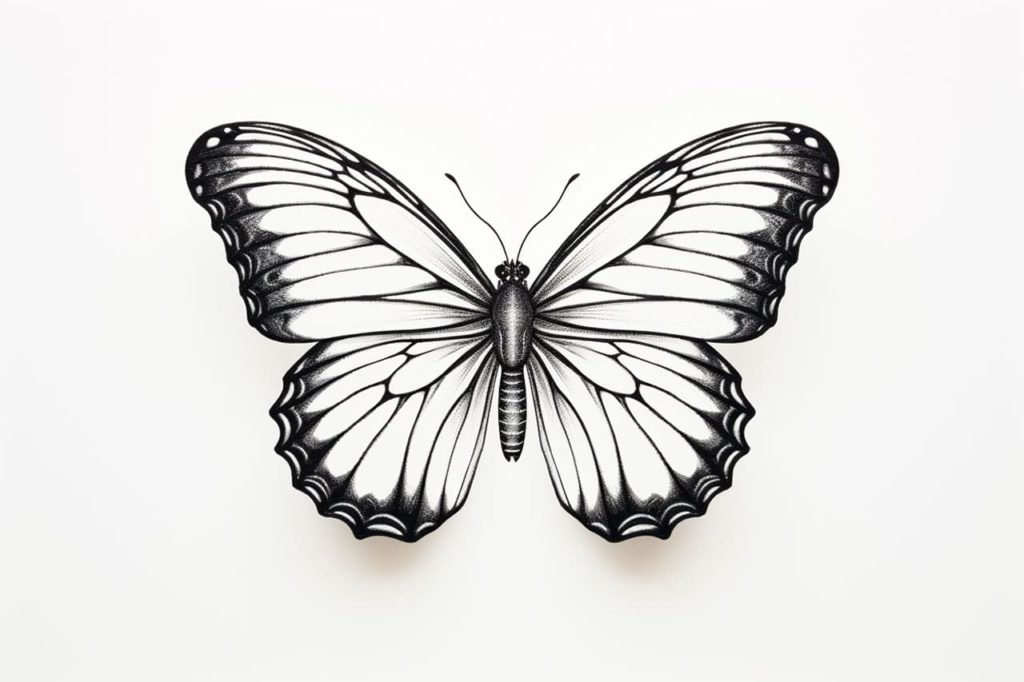
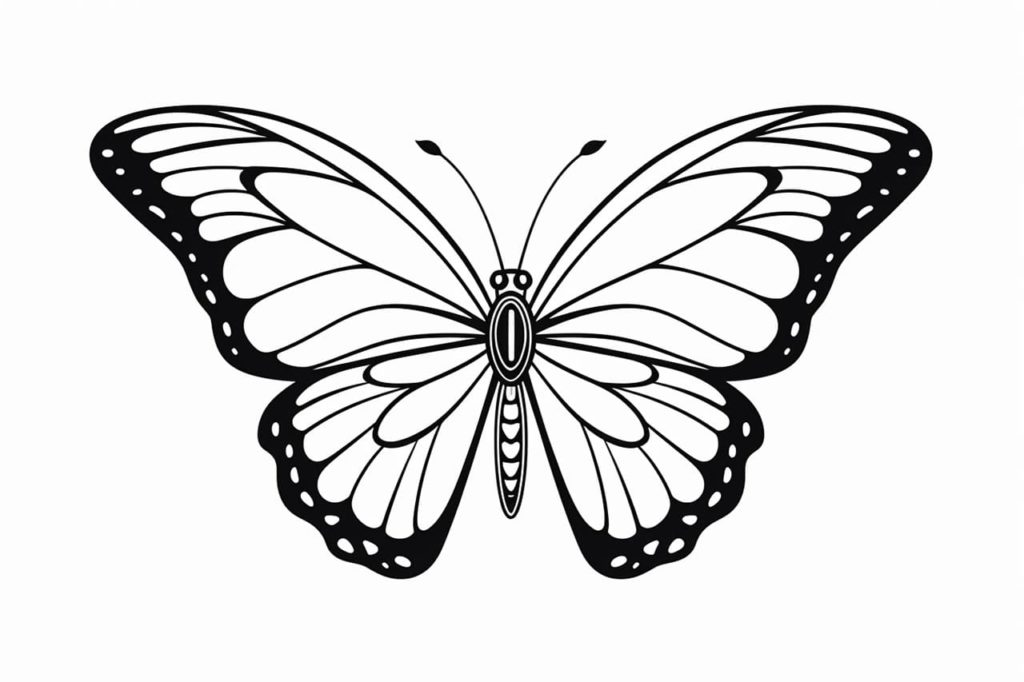
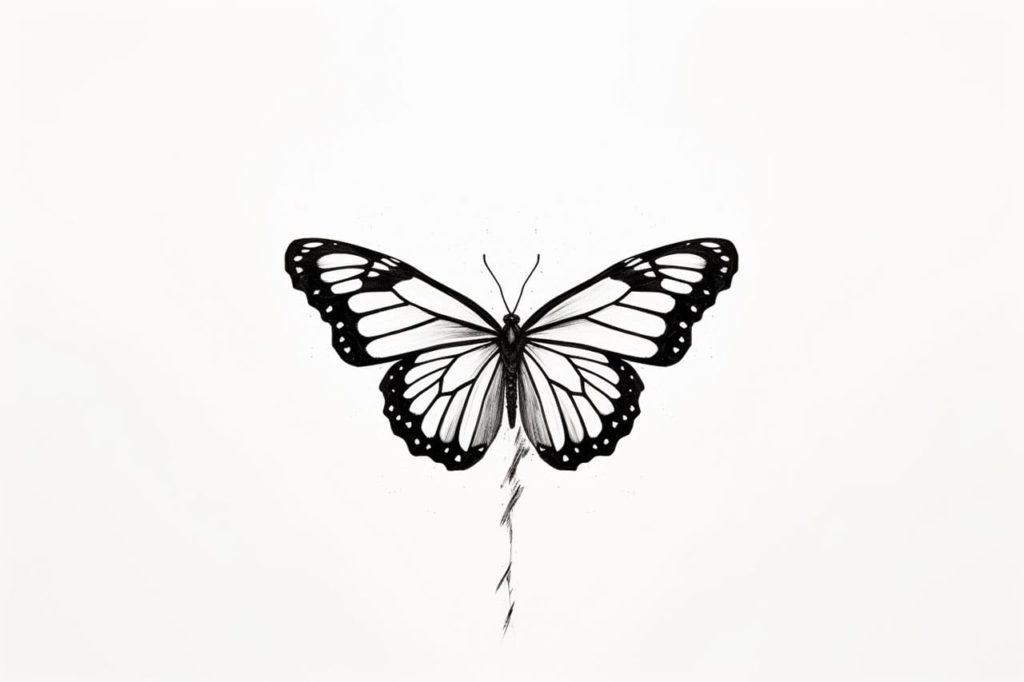
Some Scene Ideas for Monarch Butterfly Drawings
Drawing a monarch butterfly allows for artistic creativity, and you can depict these magnificent creatures in various scenes and contexts. Here are some potential scenes for drawing a monarch butterfly:
- Monarch in a Garden:
- Capture the monarch butterfly gracefully fluttering among vibrant flowers in a lush garden. The contrast between the colorful blossoms and the monarch’s orange and black wings creates a visually stunning scene.
- Monarch Migration:
- Illustrate a scene where countless monarch butterflies are in mid-flight during their annual migration. This scene can convey the wonder of nature and the incredible journey these butterflies undertake.
- Monarch Caterpillar Transforming:
- Showcase the metamorphosis of a monarch butterfly from its caterpillar stage to a chrysalis and then into a butterfly. This sequence of stages is a fascinating subject for artists.
- Monarch Butterfly on a Milkweed Plant:
- Depict a monarch butterfly perched delicately on a milkweed plant, which is essential for their survival as it’s their primary food source and a place for laying eggs.
- Monarch in a Meadow:
- Create a serene meadow scene with a monarch butterfly gracefully resting on a blade of grass or a wildflower. The peacefulness of the natural setting can evoke a sense of tranquility.
- Monarch Butterfly Close-Up:
- Zoom in on the intricate details of a monarch butterfly’s wings, showcasing the mesmerizing patterns and colors. This allows for a highly detailed and visually captivating drawing.
- Monarch in a Botanical Garden:
- Place the monarch butterfly in a botanical garden filled with exotic and colorful plants. The controlled environment can provide a unique backdrop for your artwork.
- Monarch Butterfly in a Children’s Book Illustration:
- Imagine a whimsical scene where a monarch butterfly is part of a children’s storybook illustration. You can create a fairy tale setting where the butterfly interacts with other fictional characters.
- Monarch Butterfly in Flight:
- Capture the monarch butterfly mid-flight, with its wings outstretched as it soars through the sky. This dynamic scene can showcase the butterfly’s elegance and grace in motion.
- Monarch Butterfly and a Sunset:
- Combine the beauty of a monarch butterfly with a stunning sunset backdrop. The warm, golden hues of the setting sun can complement the butterfly’s vibrant colors.
- Monarch Butterfly in a Rainforest:
- Transport your viewers to a lush rainforest habitat where the monarch butterfly is amidst exotic flora and fauna. This scene can be teeming with life and vibrant colors.
- Monarch Butterfly in Urban Setting:
- Create a juxtaposition by placing a monarch butterfly in an urban environment. This can symbolize the resilience of nature in the face of urbanization.
When drawing a monarch butterfly, consider the mood, story, and emotions you want to convey in your artwork. Each scene offers a unique opportunity to explore the beauty and symbolism associated with these iconic butterflies.
Monarch Butterfly Draw Battle
Two of our community artists compete to see who can draw the better butterfly. Who do you think won the battle? Let us know in the comments section below!

Oliver Hart (Pencil Picasso)
Oliver Hart, better known as Pencil Picasso, transforms simple pencil strokes into captivating expressions of modern art. With a keen eye for detail and a passion for innovative design, his work reimagines traditional sketching into dynamic narratives that inspire and delight.


Amelia Hayes (Crayon Conqueror)
Amelia Hayes, known as Crayon Conqueror, brings a burst of vibrant energy to every canvas with her signature use of crayon. Her imaginative compositions transform everyday scenes into colorful narratives that challenge the norm and celebrate creative freedom.


